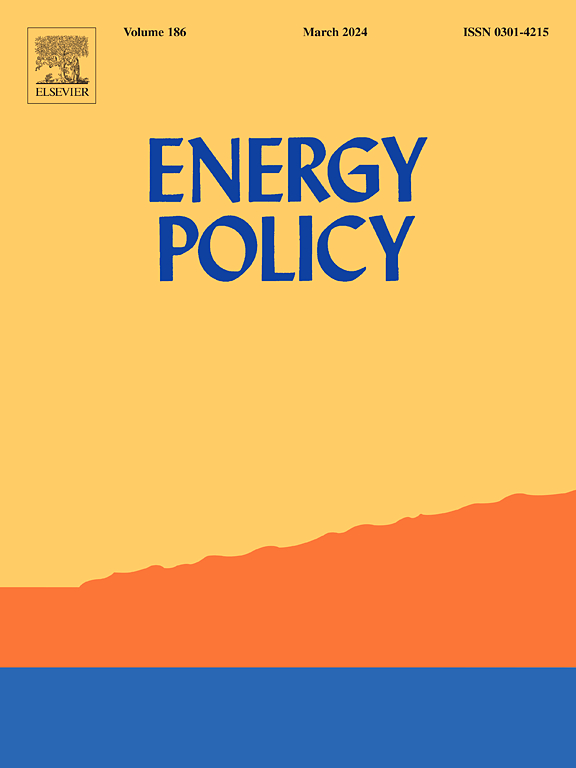在沙特阿拉伯二氧化碳去除技术评估中应用多标准决策分析
IF 9.2
2区 经济学
Q1 ECONOMICS
引用次数: 0
摘要
本文研究了各种二氧化碳去除策略在沙特阿拉伯的潜在应用。它使用多标准决策分析方法评估传统和创新的二氧化碳去除解决方案。该研究定义了性能、经济和环境标准,包括技术准备程度、二氧化碳持久性、成本、环境影响和社会经济共同效益等因素。此外,它还审查了政策和监管环境,以及监测、报告、核查和认证不同二氧化碳清除的可行性和准备情况。该分析确定了沙特阿拉伯优先考虑的五大二氧化碳清除类型:(i)废物能源和生物甲烷生产与碳捕获、利用和储存相结合,(ii)直接空气捕获,(iii)生物质热解生产生物炭,(iv)传统的基于自然的解决方案,以及(v)增强风化。该研究表明,沙特王国的政策应侧重于将垃圾填埋场的废物转移到“具有碳捕获、利用和储存的废物能源”设施,并利用工业场所的废热建立直接的空气捕获网络。通过提供详细的分析,本文旨在为政策制定者、研究人员和利益相关者提供有价值的指导,以推进沙特阿拉伯的二氧化碳减排工作。本文章由计算机程序翻译,如有差异,请以英文原文为准。
Applying multi-criteria decision analysis in the assessment of carbon dioxide removal technologies for Saudi Arabia
This paper investigates the potential application of various carbon dioxide removal strategies within Saudi Arabia. It evaluates both traditional and innovative carbon dioxide removal solutions using a multi-criteria decision analysis approach. The study defines performance, economic, and environmental criteria, including factors such as technology readiness, CO2 permanence, costs, environmental impacts, and socio-economic co-benefits. Furthermore, it examines the policy and regulatory environment, as well as the feasibility and preparedness for monitoring, reporting, verification, and certification of different carbon dioxide removals. The analysis identifies five key groups of carbon dioxide removals for prioritization in Saudi Arabia: (i) energy-from-waste and biomethane production integrated with carbon capture, utilization, and storage, (ii) direct air capture, (iii) biomass pyrolysis producing biochar, (iv) conventional nature-based solutions, and (v) enhanced weathering. The study suggests that policies in the Kingdom should focus on diverting waste from landfills to 'energy-from-waste with carbon capture, utilization, and storage' facilities and on utilizing waste heat from industrial sites for direct air capture networks. By offering this detailed analysis, the paper seeks to provide valuable guidance for policymakers, researchers, and stakeholders in advancing carbon dioxide removal efforts in Saudi Arabia.
求助全文
通过发布文献求助,成功后即可免费获取论文全文。
去求助
来源期刊

Energy Policy
管理科学-环境科学
CiteScore
17.30
自引率
5.60%
发文量
540
审稿时长
7.9 months
期刊介绍:
Energy policy is the manner in which a given entity (often governmental) has decided to address issues of energy development including energy conversion, distribution and use as well as reduction of greenhouse gas emissions in order to contribute to climate change mitigation. The attributes of energy policy may include legislation, international treaties, incentives to investment, guidelines for energy conservation, taxation and other public policy techniques.
Energy policy is closely related to climate change policy because totalled worldwide the energy sector emits more greenhouse gas than other sectors.
 求助内容:
求助内容: 应助结果提醒方式:
应助结果提醒方式:


